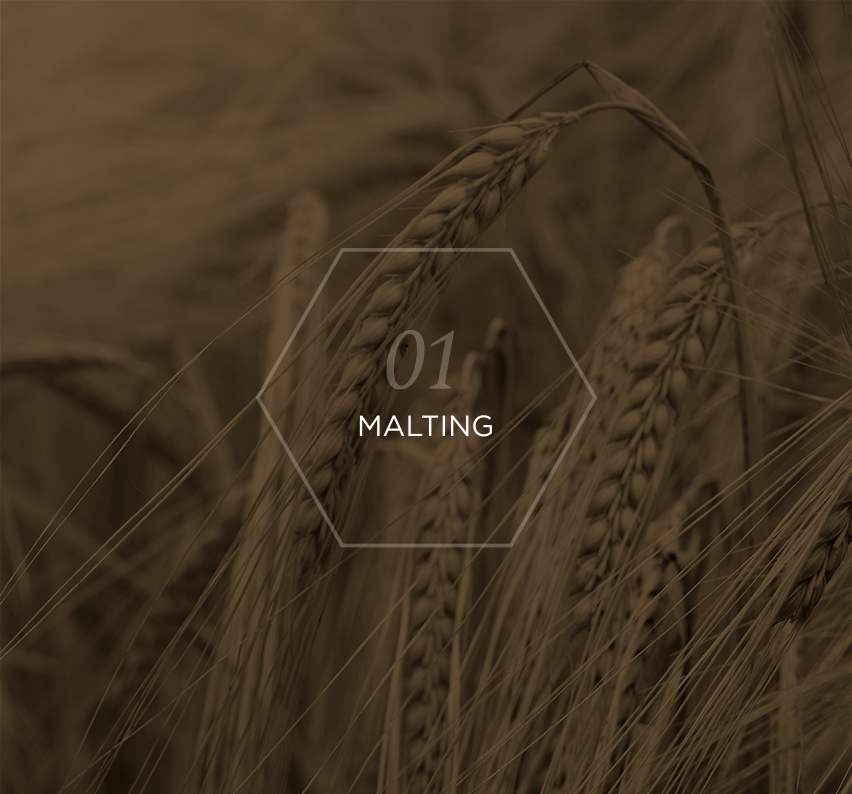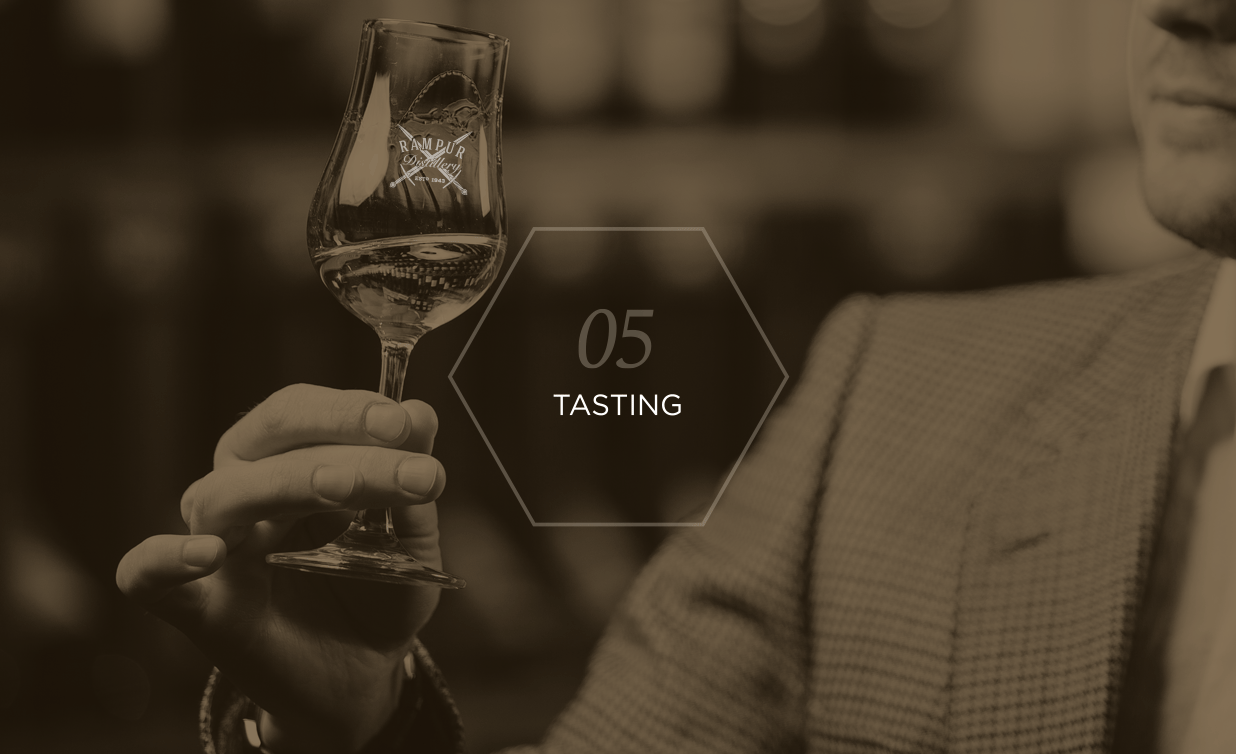ARE YOU OF LEGAL DRINKING AGE
IN YOUR COUNTRY?

IN YOUR COUNTRY?
the timeless art of making a masterpiece
Meet Anup Barik, a celebrated Master Blender at Radico Khaitan, born into a family of blenders. Recently crowned as the Master Blender of the year 2023 by Icons of Whisky India, he has been the driving force behind the exquisite range of Rampur Single Malts and the splendid Jaisalmer Gin.

The barley is steeped in water and spread across a malting floor, allowing it to germinate. This starts the conversion of starch within the barley into sugars, which mixed with yeast will create the alcohol. Sometimes the barley is dried over peat, imparting a smoky flavor. Once it is dried, the malt is ground to a coarse flour called ‘grist’ and mixed with hot spring water in a large vessel called a ‘mash tun’.

The sugars from the malt dissolve, creating a sweet liquid called ‘wort’. The wort is passed into a large container, called a ‘washback’, where the liquid is fermented by adding yeast. This process converts the sugars in the wort into alcohol, creating a liquid called ‘wash’ which reaches a strength of about 8% ABV. Now, the distillation can begin.

The first distillation takes place in the ‘wash’ still where the alcohol vapors rise to the top first. The vapors pass over the head of the still, before they are guided through a condenser as they return to a liquid form. The result is a ‘low wine’ at a strength of about 20% ABV, which then makes its way to the second ‘spirit’ still, where the distillation process repeats itself. High quality spirit is then collected.

It is now time to mature the new make spirit. Scotch whisky is matured in oak for a minimum of three years. These casks impart a distinctive golden color to the whisky. Many casks are imported from Europe and America, having started out life holding bourbon, sherry, port and wine. After some time in oak casks, the whisky is ready to be enjoyed the world over.

This is where the Master Blender comes in. This person has the task of combining the casks in such a way that the ideal aroma and a round taste is created. Whisky blending is a creative art!

The Whisky is then transferred through tubes to the bottling station where the machine is filling the Whisky into single bottles. Before the bottles are filled, they are washed out with the same Whisky, that gets filled into it. After the bottles are filled they are corked and labelled. In the last step, they are sealed and made ready for being shipped.

Rampur is distilled in traditional copper pot stills in the oldest distillery in India, dating from 1943 with 80 years of distillation expertise. The Himalayas provide polar opposite of climate conditions throughout the year with the flavor of the famous Indian Summer giving Rampur an added dimension and depth.
Our strive for excellence towards taste and luxury has been recognized all over the world, one pour at a time. Not only do we raise the bar of expectations but also push the limits in attaining greater heights of providing you with a royal experience, as expected from us.
Right from having an imprint in 40 countries across continents to achieving a breathtaking 93 points in the World Whisky Survey, we have done it all.